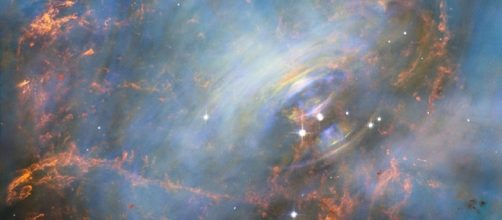NASA´s Hubble Space Telescope wide field view images keeps amazing us with fantastic high resolution images of the universe. This time, Hubble captured the tiny pulses of a Neutron Star and the high energetic particles in its magnetic field. The Crab nebula and pulsar are thought to be the leftover of a supernova explosion that occurred in 1954 and was observed by Chinese astronomers in plain day light. The Crab Nebula is not visible to the naked eye; however, it can be observed with binoculars under ay night´s favorable conditions. Supernovae are some of the most energetic events in the whole universe.
Crab Nebula
This is a supernova remnant located in the direction of the constellation Taurus some 6,500 light years of distance from earth. On 1054, Chinese astronomers documented a supernova explosion, which is thought to have originated the Crab Nebula. This astronomical event is known to have been seen during plain daylight for 23 days. At the center of the Crab Nebula lies a pulsar-rotating neutron star ejecting pulses of radiation at a rate of 30 pulses every second.
Pulsar
This if a fast rotating neutron star, emitting electromagnetic radiation from gamma rays to radio waves. These types of stars are highly dense and present regular rotating periods, ranging from milliseconds to seconds, making them very useful for sensing purposes.
The pulsar in the crab nebula is the crushed core of an exploded star and rotates at a rate of 30 times per second. Neutron stars are usually the size of a small city or 16 km (10 miles) across and possess a very strong gravitational field.
Origin of the name Crab Nebula
The name was originated by William Parson-British astronomer, who observed it in 1840 and sketched it on paper exactly as he had seen it. The drawing produced the figure of a crab. Charles Messier classified it as M1 one century before; however, this astronomical nebula is best known as the Crab Nebula.
The precise periods of rotation of pulsar make them very useful in astronomy. Observations of the regular periods of a pulsar in a binary system were utilized to confirm the existence of gravitational radiation and the first exoplanets were discovered in the vicinity of a pulsar.
Supernovae are some of the most powerful astronomical events occurring in the entire universe. A supernova can even be observed in plain daylight, such as the one pponbserved in 1054 by Chinese astronomers.

